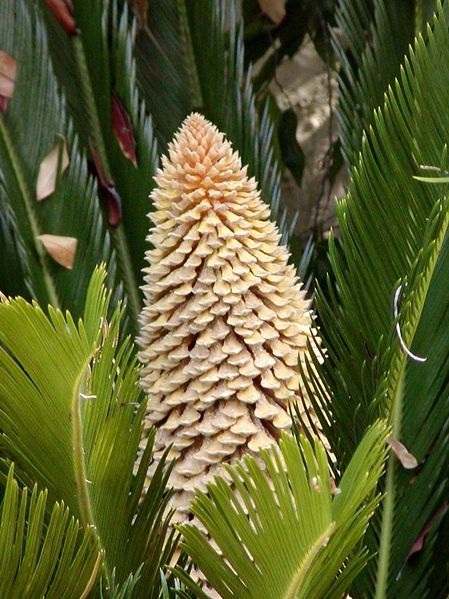Scientists in the US and Australia have shown that age is not a barrier to hot sex, at least when it comes to one of the world's oldest species of tree. Reporting their findings in the journal Science, University of Utah researcher Irene Terry, together with Gimme Walter, Chris Moore and Craig Hull from the University of Queensland, have solved a long standing puzzle about the reproduction of cycads, primitive plants dubbed "living fossils" that date back almost 300 million years. 
Like us the plants come in male or female forms and both produce cones similar to those seen on modern fir trees. Pollen from the male cones must make its way to the female cones to fertilise them, and previously scientists thought that the wind was responsible, but subsequent studies showed that the cone scales were packed too tightly for pollen to enter efficiently. Instead it turns out that the cycads rely on thrips, tiny insects that feast on pollen, to get the job done.
But how do you pursuade pollen-covered insects to vacate a male cone and head for the female counterpart? The answer is ingenious. The cycad cones lure thrips by secreting low concentrations of volatile chemicals, including one called beta-myrcene, that the insects find attractive. The male cones produce more of the chemical than the female cones and so tend to attract more insects initially. But around midday the cones abruptly warm up, sometimes by as much as 12 degrees celsius, and remain hot until mid-afternoon, a feat they achieve by burning up sugars, starches and fats stockpiled within the cone. The surge in temperature triggers a huge million-fold increase in the production of the volatile chemicals, chiefly in the male cones. "It's takes your breath away. It's a harsh, overwhelming odour like nothing you've ever smelled before," says Terry. Just as it repels humans, the smell also overwhelms the thrips, that desert the male cones in droves, still covered in the pollen-vestiges of their dinner.
But then later, as the day goes on and the cones cool again, the odour concentration drops and the insects find it attractive again and return. But they also visit some of the female cones, mistaking them for males, and in the process deposit some of the pollen they picked up earlier. The cycle repeats itself the next day "until the males wear out and the females are happily pollinated," says Terry. So 300 million years old they might be, but they're not so unlike humans after all it seems!
Irene Terry came on the show to talk about this story - you can read the interview
here!









Comments
Add a comment